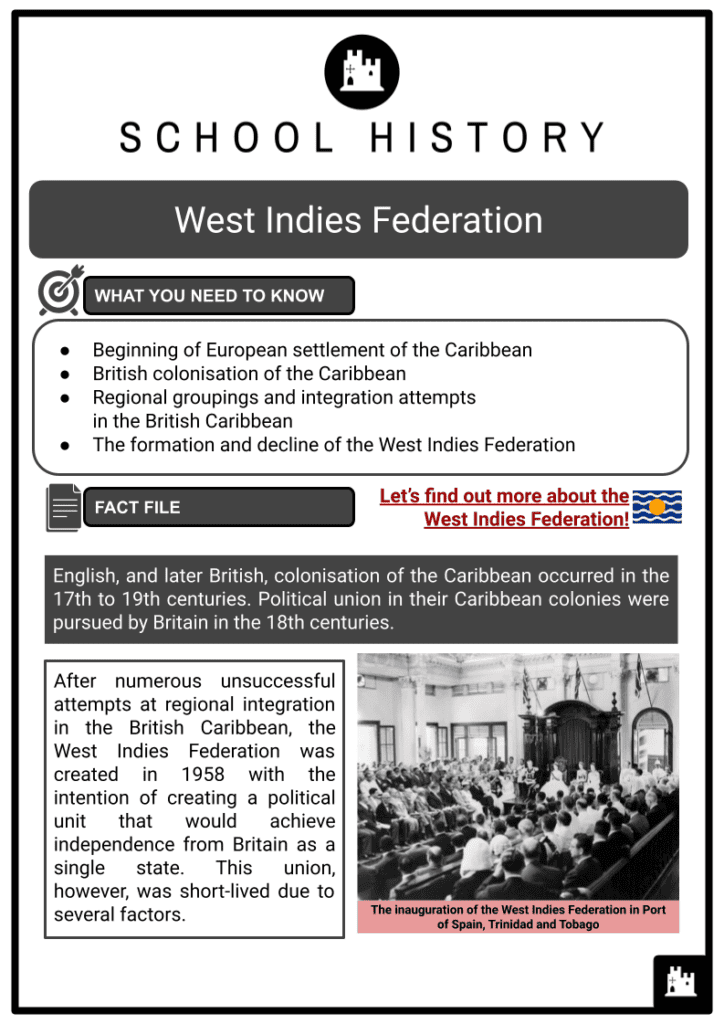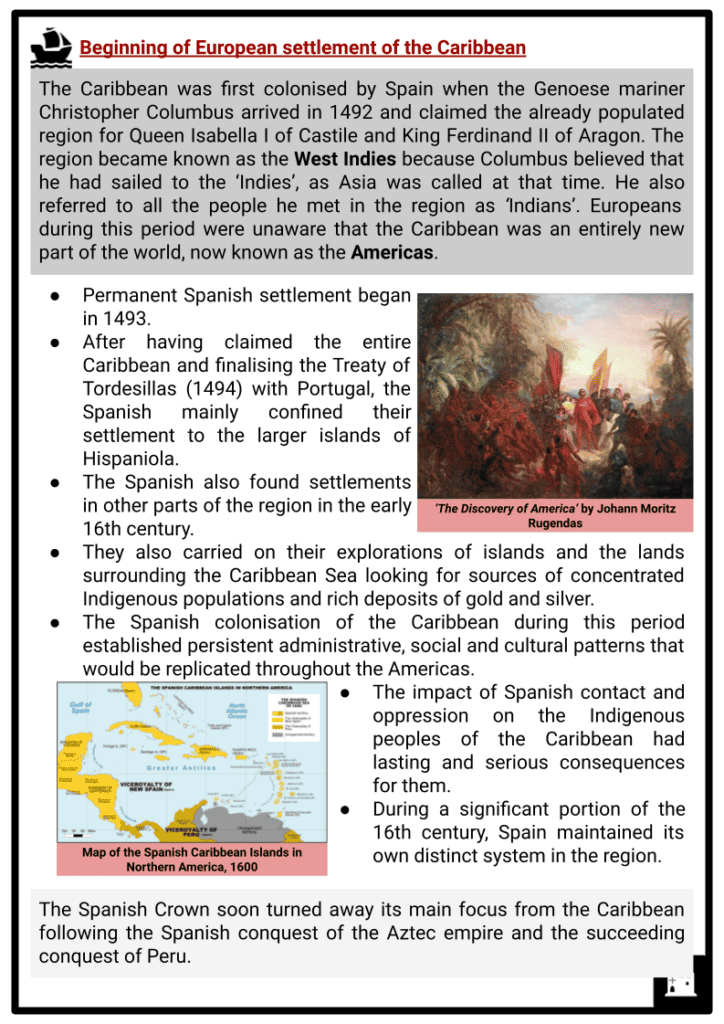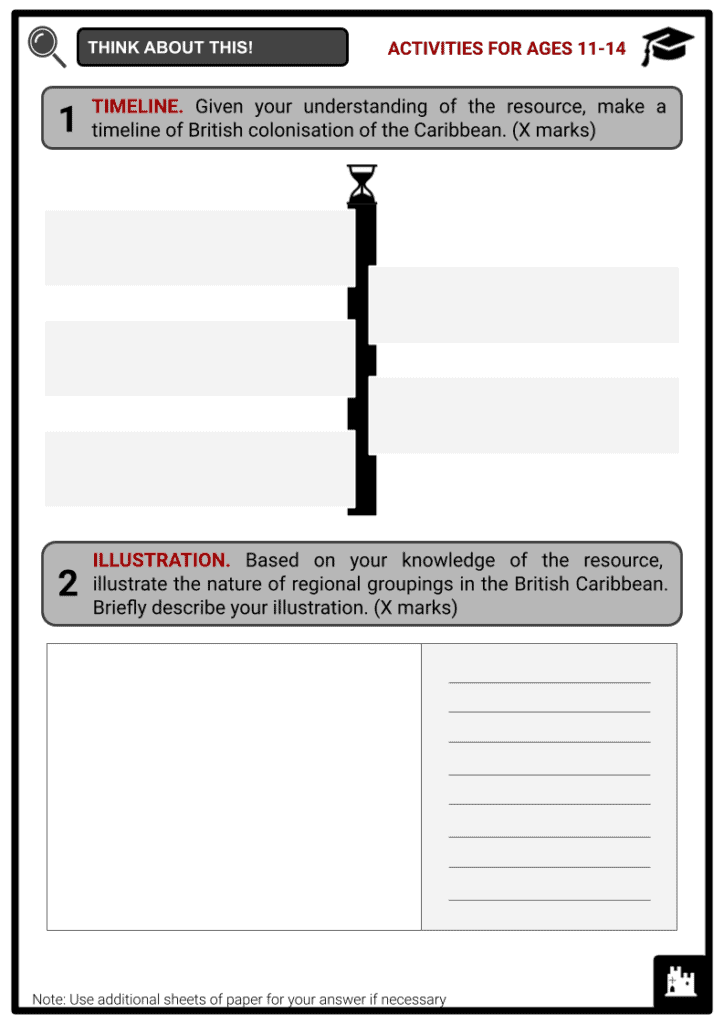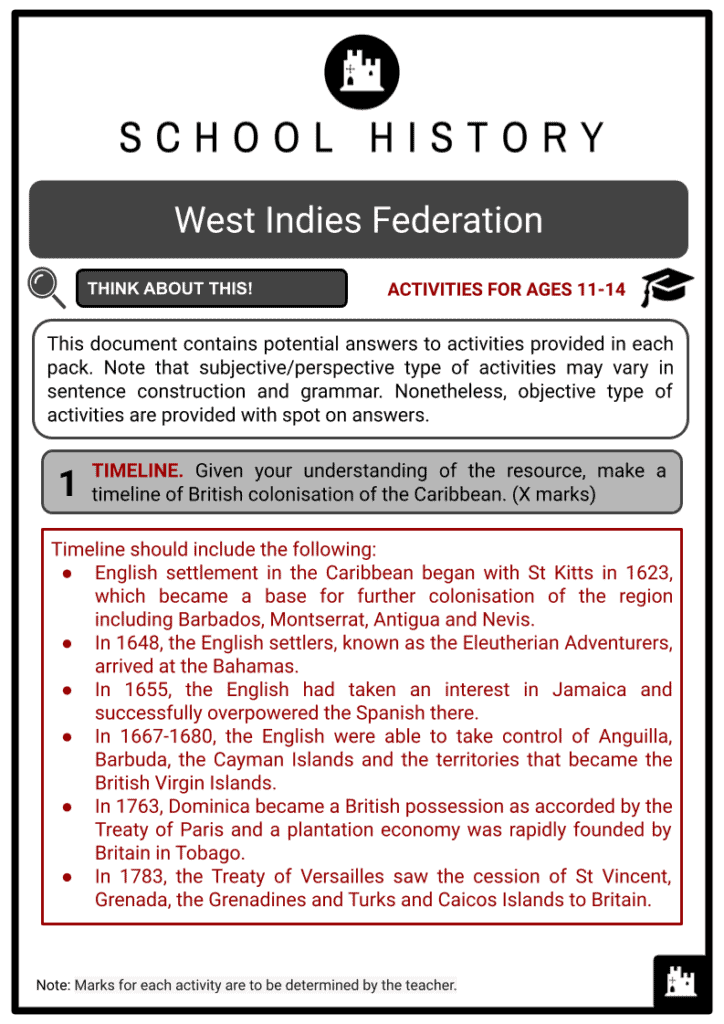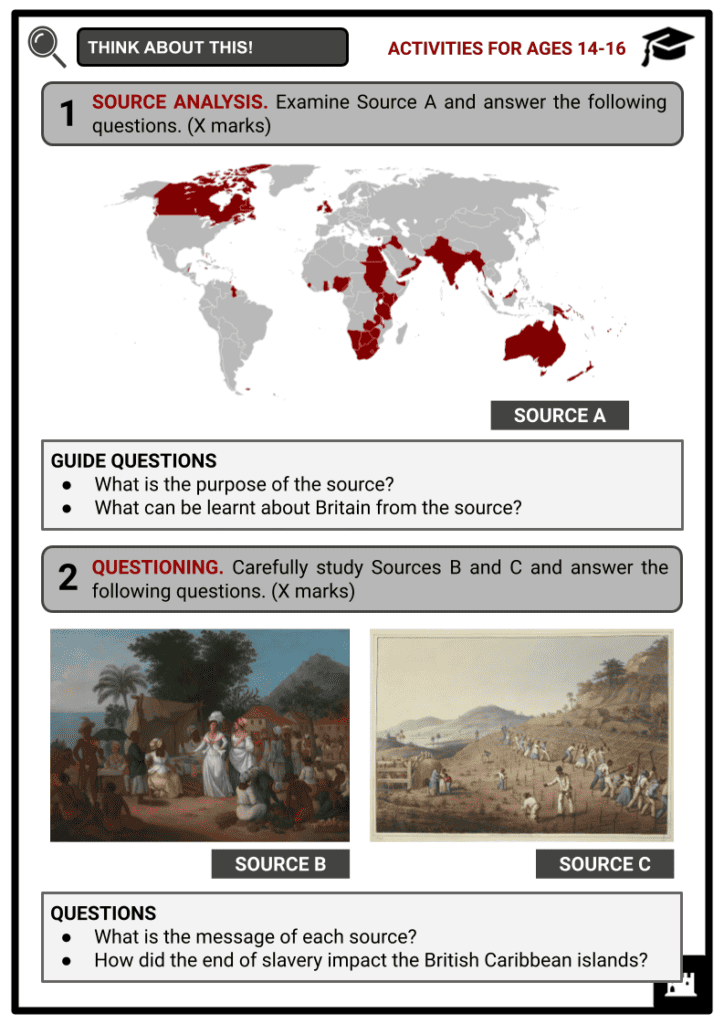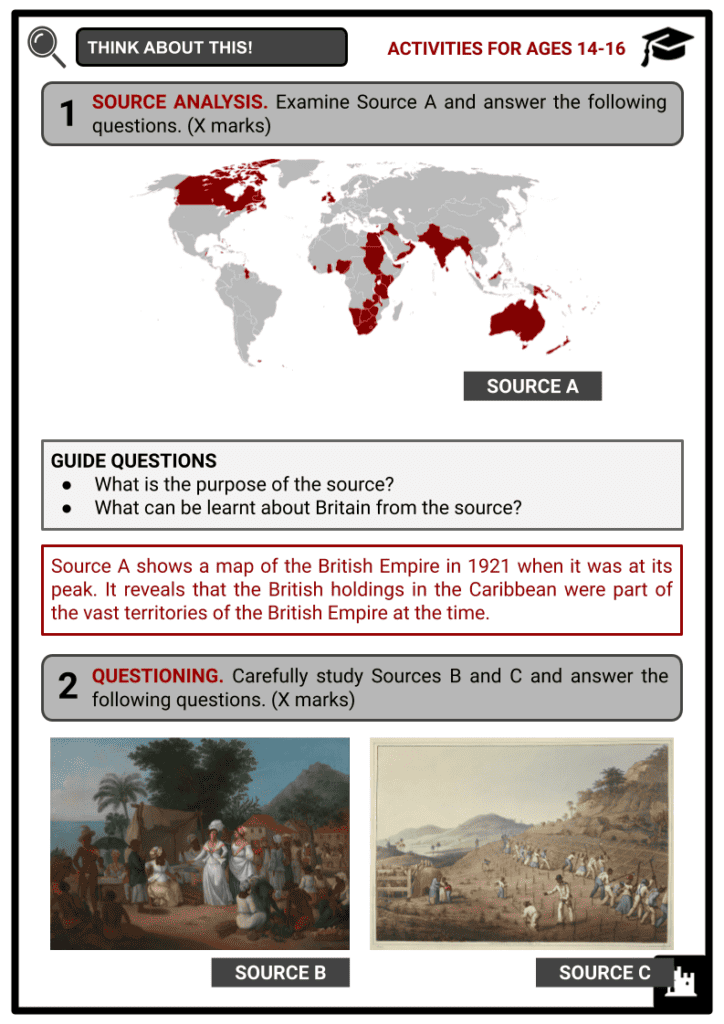West Indies Federation Worksheets
Do you want to save dozens of hours in time? Get your evenings and weekends back? Be able to teach about the West Indies Federation to your students?
Our worksheet bundle includes a fact file and printable worksheets and student activities. Perfect for both the classroom and homeschooling!
Summary
- Beginning of European settlement of the Caribbean
- British colonisation of the Caribbean
- Regional groupings and integration attempts in the British Caribbean
- The formation and decline of the West Indies Federation
Key Facts And Information
Let’s find out more about the West Indies Federation!
English, and later British, colonisation of the Caribbean occurred in the 17th to 19th centuries. Political unions in their Caribbean colonies were pursued by Britain in the 18th century. After numerous unsuccessful attempts at regional integration in the British Caribbean, the West Indies Federation was created in 1958 with the intention of creating a political unit that would achieve independence from Britain as a single state. This union, however, was short-lived due to several factors.
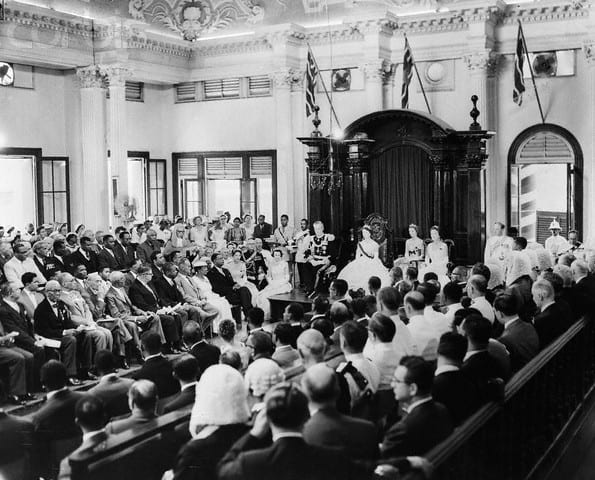
Beginning of European settlement of the Caribbean
- The Caribbean was first colonised by Spain when the Genoese mariner Christopher Columbus arrived in 1492 and claimed the already populated region for Queen Isabella I of Castile and King Ferdinand II of Aragon. The region became known as the West Indies because Columbus believed that he had sailed to the ‘Indies’, as Asia was called at that time. He also referred to all the people he met in the region as ‘Indians’. Europeans during this period were unaware that the Caribbean was an entirely new part of the world, now known as the Americas.
- Permanent Spanish settlement began in 1493.
- After having claimed the entire Caribbean and finalising the Treaty of Tordesillas (1494) with Portugal, the Spanish mainly confined their settlement to the larger islands of Hispaniola.
- The Spanish also found settlements in other parts of the region in the early 16th century.
- They also carried on their explorations of islands and the lands surrounding the Caribbean Sea, looking for sources of concentrated Indigenous populations and rich deposits of gold and silver.
- The Spanish colonisation of the Caribbean during this period established persistent administrative, social and cultural patterns that would be replicated throughout the Americas.
- The impact of Spanish contact and oppression on the Indigenous peoples of the Caribbean had lasting and serious consequences for them.
- During a significant portion of the 16th century, Spain maintained its own distinct system in the region.
- The Spanish Crown soon turned away its main focus from the Caribbean following the Spanish conquest of the Aztec empire and the succeeding conquest of Peru.
British colonisation of the Caribbean
- Spain and Portugal practically held a monopoly over the Caribbean islands and South America. The early Spanish transatlantic voyages paved the way for further European exploration of the American continent. It was in the early 17th century that other European powers who were also in search of wealth, such as England and France, established settlements in the Caribbean. Prior to this, England had shown interest in the region in the preceding century.
- In 1562, the English admiral and privateer John Hawkins attacked Portuguese merchant ships and stole 300 enslaved people that he sold illegally in the Spanish Caribbean. At the time, indentured servants were being replaced by enslaved Africans. Many privateers made fortunes through smuggling. Hawkins made two other voyages to take advantage of the lucrative slave trade in the Caribbean in 1564-65 and 1567-69.
- Hawkins was influential in encouraging others, including Francis Drake, to break Spain’s monopoly of trade in the Caribbean. Drake assaulted several Spanish settlements with the capture of the Spanish Silver Train at Nombre de Dios in March 1573 as his most notable Caribbean exploit.
- The climate of Britain meant there were many products that could not be locally produced, including sugar and tobacco. The Caribbean was the perfect environment to grow these cash crops. It offered European powers without colonies in the Americas the possibility to develop sugarcane plantations on the model set by the Spanish, using enslaved African labourers. Additionally, the islands could also be used as bases for trade and piracy.
- English settlement in the Caribbean began with St Kitts in 1623, which became a base for further colonisation of the region, including Barbados, Montserrat, Antigua and Nevis.
- In 1625, a few English colonists were sent to Barbados, with the first settlement on the island beginning in 1627. The settlement was set up as a proprietary colony. The first settlers on the island included poor English people who worked as indentured labourers. Soon, hundreds of English people sailed there to make their fortunes in agriculture.
- In 1648, the English settlers, known as the Eleutherian Adventurers, arrived in the Bahamas. They were English Puritans who were looking for greater religious freedom.
- In 1655, the English had taken an interest in Jamaica and successfully overpowered the Spanish there. A significant number of Irish people, who were mostly political prisoners of war, were brought to the island as indentured labourers and soldiers.
- In 1667-1680, the English were able to take control of Anguilla, Barbuda, the Cayman Islands and the territories that became the British Virgin Islands.
- In 1672, the London-based Royal Africa Company was granted a charter to provide enslaved Africans for the Caribbean. Consequently, around 100,000 Africans were forced into slavery in the region between 1672 and 1689. The Company lost control of the transatlantic slave trade in 1689, enabling Bristol and Liverpool merchants started to participate in the trade.
- Between the 17th and 18th centuries, British settlements in the Caribbean became linked to sugarcane plantations using slave labour imported from West Africa. Whilst this trade brought huge profits and wealth for both Britain and the Caribbean, it had enduring and damaging effects on the Caribbean economies and, more importantly, on the Indigenous peoples in the region.
- In 1763, Dominica became a British possession as accorded by the Treaty of Paris. In addition, a plantation economy was rapidly founded by Britain in Tobago following the end of its neutral status that year.
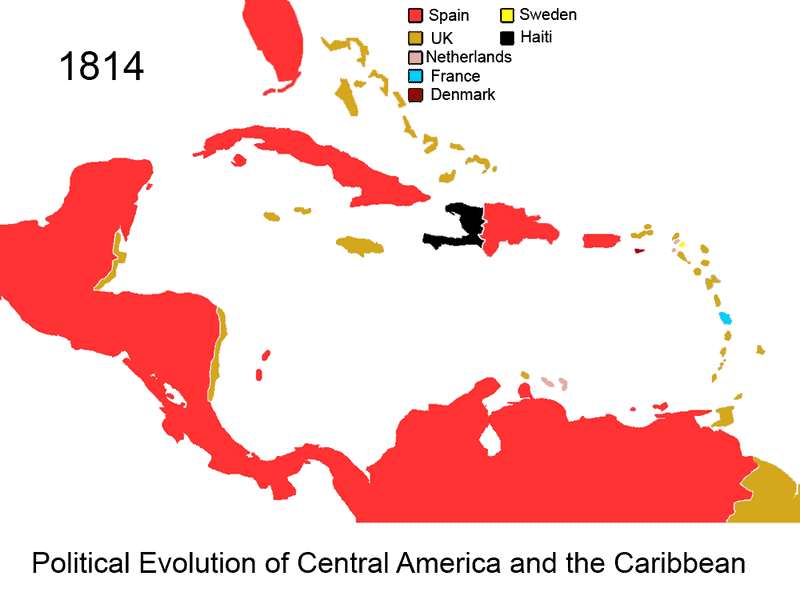
Map of Central America and the Caribbean in 1814 - In 1783, the Treaty of Versailles saw the cession of St Vincent, Grenada, the Grenadines and the Turks and Caicos Islands to Britain.
- British Guiana was first colonised by Britain in 1796. The following year, Trinidad was also invaded, becoming a British crown colony with a French-speaking population and Spanish laws.
- In 1803, St Lucia was held by the British and was formally ceded to them in 1814 with a predominantly French population. Britain’s retention of Tobago and British Guiana was also confirmed.
- By 1815, Britain controlled a majority of the key Caribbean islands.
- In 1834, the British Parliament abolished slavery in all British colonies. However, emancipation was designed to be a gradual process and, in fact, involved a system of apprenticeship in which the emancipated had to continue providing service for their former enslavers for a few years. Following pressure from the British public, the system of apprenticeship was ended by the colonial legislative assemblies in 1838, completing the process of emancipation. The end of slavery triggered a series of significant economic shocks in the Caribbean, which at the time was already losing its importance to British imperial ambitions and economy.
Regional groupings and integration attempts in the British Caribbean
- Several territories in the Caribbean were colonised by Britain over the centuries, and they were often referred to as the British West Indies. These included St Kitts, Barbados, Montserrat, Antigua, Nevis, the Bahamas, Jamaica, Anguilla, Barbuda, the Cayman Islands, British Virgin Islands, Dominica, Tobago, St Vincent, Grenada, the Grenadines, Turks and Caicos Islands, British Guiana, Trinidad and St Lucia. Despite being outside the Caribbean, Bermuda and British Honduras were also often included.
- Britain carried out initiatives for political union in their Caribbean colonies. A few administrative groupings initially emerged:
British Leeward Islands
- The northern islands of the Lesser Antilles chain were administered together by the British since the late 17th century. These included Antigua, Barbuda, Montserrat, St Kitts, Nevis, Anguilla and the British Virgin Islands.
- In 1816-1833, this grouping was split into two separate colonies.
- In 1833, the islands again joined together to create the British Leeward Islands. Dominica was annexed to this grouping until 1940.
British Windward Islands
- The British Windward Islands were created in 1833 and originally comprised St Vincent, St Lucia, Grenada, the Grenadines, Barbados and Tobago.
- Barbados and Tobago left this grouping in 1885 and 1889, respectively.
- Meanwhile, Dominica joined in 1940 after having been transferred from the British Leewards Islands.
Trinidad and Tobago
- Tobago’s economy suffered as a consequence of the collapse of its plantation industry in the 19th century.
- This led to the amalgamation of Tobago with Trinidad in 1889; hence, the united colony of Trinidad and Tobago was formed. This ended Tobago’s union with the British Windward Islands.
- Meanwhile, the Bahamas, Barbados, British Guiana, British Honduras and Jamaica, Turks and Caicos Islands and the Cayman Islands remained as separate colonies.
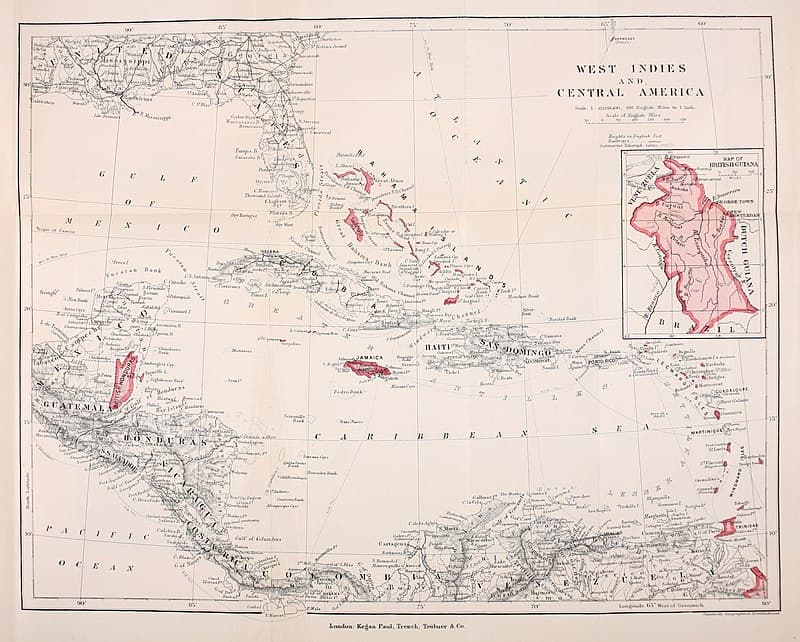
British colonies in West Indies and Central America in 1900 - From the late 19th century, a number of federal structures to further unify the British holdings in the Caribbean had been proposed:
- 1876
- Sir John Pope Hennessy, Governor-in-Chief of the British Windward Islands with primary authority over Barbados, was tasked to organise a closer, formal federation of Barbados and the other islands.
- This met resistance from the ruling planting class, the press and a few prominent coloured people. Meanwhile, this plan was backed by labourers who believed that it would enable them to look for employment with higher wages or purchase their own plots of land elsewhere in the Windward Islands.
- The federation plan was ultimately abandoned due to fierce opposition and bloody riots.
- 1897
- A royal commission recommended a federation of Barbados and the British Windward Islands. By this time, Barbados had returned to its former status of a completely separate colony. The Colonial Office rejected this proposal.
- 1932
- A conference was held in Dominica and attended by legislators from the British Leeward and Windward Islands, Trinidad and Tobago and Barbados.
- They gathered to draw up a proposal for a federation of the attending colonies for presentation to the Colonial Office.
- In response to this proposal, the British government appointed a commission.
- 1932-33
- The Closer Union Commission, led by two British officials, Sir Charles Orr and Sir Charles Ferguson, put forward another proposal to unite only the British Leeward and Windward Islands.
- This was rejected as lacking support.
- 1938
- The Caribbean Labour Congress presented a proposal for a federation of the Eastern Caribbean, British Guiana, Jamaica, Trinidad and Tobago and the Bahamas.
- This was the first time that the labourers of the Caribbean had ever endorsed some form of Caribbean integration.
- Britain responded by assigning the Moyne Commission the task of incorporating federation in their study.
- 1939
- The Moyne Commission reported that the Caribbean people were not prepared to accept the principles of political and economic unity.
- This brought an end to all further colonial initiatives to integrate the islands in the region.
- 1876
- During the Second World War, any attempt at the Caribbean federation was temporarily abandoned.
- By 1945, Britain renewed their desire to unify the region, suggesting a federation of the colonies with full internal self-government as the ultimate goal.
- This time, this concept was backed by a few middle-class, intellectual Caribbean citizens and had caught the interest of trade union groups.
- In 1947, Britain’s Secretary of State convened a conference of Caribbean leaders together with colonial and British officials, which met at Montego Bay in Jamaica. At the Montego Bay Conference, the Caribbean government representatives followed the principle of a West Indian Federation and concurred to formulate proposals that would form the basis of a federation.
The formation and decline of the West Indies Federation
- Although the 1947 conference favoured the integration of the British Caribbean colonies, it took 11 years for the Colonial Office and Caribbean leaders to finally devise the terms and structure of a federation. The passage of the British Caribbean Federation Act of 1956 saw the formation of the West Indies Federation in January 1958 with the intention of creating a political unit that would achieve independence from Britain as a single state. Port of Spain in Trinidad and Tobago served as the de facto federal capital.
Composition
- The federation comprised Trinidad and Tobago, Barbados, Jamaica and the Cayman Islands and the Turks and Caicos Islands, Antigua and Barbuda, St Kitts and Nevis and Anguilla, Montserrat, Dominica, St Lucia, St Vincent and the Grenadines, and Grenada which then became the provinces.
- It consisted of about 24 main inhabited islands and approximately 220-230 minor offshore islands, islets and cays.
- With the total population between 3 and 4 million, the majority was of West African descent.
- Some colonies that were part of the British West Indies decided not to join the federation. These were British Guiana, the Bahamas, Bermuda, the British Virgin Islands and British Honduras.
Government structure
- The federation was an internally self-governing, federal state with the British monarch as the head of state vested with the legislative authority.
- The monarch’s representative was the Executive Governor-General, appointed by Britain and given the full power to veto any laws passed by the federation.
- The Federal Parliament was bicameral, comprising a nominated Senate (19 members) and a popularly elected House of Representatives (45 members).
- The government was a Council of State presided over by the Governor-General and consisted of the Prime Minister and ten other officials.
Issues
- The federal structure of the federation proved to be weak.
- The provinces were not incorporated into a sole customs union.
- Complete freedom of movement within the federation was prohibited as the larger provinces feared mass migration from smaller provinces.
- The federal budget was reliant on grants from Britain. Additionally, some provinces tended to provide greater financing to the federal government.
- The office of the Prime Minister was relatively weak.
- The PM could not dissolve Parliament, unlike other Westminster systems with Prime Ministers.
- Disagreements emerged among the government of the provinces.
- Some provinces wanted a strong federal state, whilst others sought a federal structure that granted each member considerable autonomy.
- Apart from these issues, several factors were thought to contribute to the collapse of the federation.
- These included inadequacies in the federal constitution, tension between the Caribbean leaders, the overwhelming concentration of population and resources in the two largest provinces, and geographic and cultural distance between the provinces.
- However, it was Jamaica’s withdrawal that led to the dissolution of the West Indies Federation.
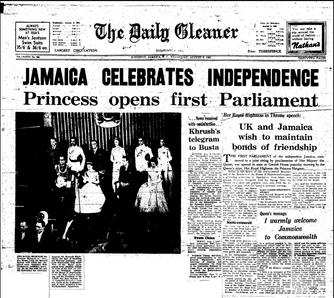
Newspaper’s front page announcing Jamaican independence - Jamaica believed that the smaller provinces would be a drain on its wealth. It was also disappointed that independence had not yet been granted to the federation.
- The Jamaicans’ dissatisfaction with the federation was reflected in the results of a national referendum conducted in 1961, which showed that the majority was in favour of withdrawing from the federation. Britain granted independence to Jamaica in August 1962.
- Following Jamaica’s withdrawal, there had been attempts to save the federation. Negotiations, however, turned out to be fruitless.
- Trinidad and Tobago opted out of the federation and also achieved independence in August 1962. Without its two largest provinces that contributed significantly to the federal budget, the West Indies Federation was abolished in May 1962.
Image Sources
- https://upload.wikimedia.org/wikipedia/commons/d/d2/West_Indies_Federation_%281%29.jpg?20150330142741
- https://upload.wikimedia.org/wikipedia/commons/thumb/4/40/Political_Evolution_of_Central_America_and_the_Caribbean_1814_na.png/800px-Political_Evolution_of_Central_America_and_the_Caribbean_1814_na.png
- https://upload.wikimedia.org/wikipedia/commons/thumb/6/6b/West_Indies_and_Central_America.jpg/800px-West_Indies_and_Central_America.jpg
- https://upload.wikimedia.org/wikipedia/en/4/4e/JamaicanIndependence.jpg
Frequently Asked Questions
- What was the West Indies Federation?
The West Indies Federation was a political union of British colonies in the Caribbean, established in 1958 to promote regional cooperation and eventual self-government.
- Which territories were part of the West Indies Federation?
The West Indies Federation included ten member territories, including Jamaica, Trinidad and Tobago, Barbados, Antigua, and several other Caribbean islands.
- When did the West Indies Federation dissolve?
The West Indies Federation dissolved on 31 May 1962, after only four years of existence.

